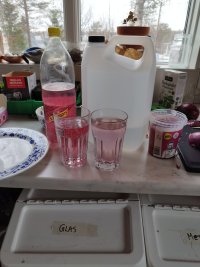I 2nd that!
Just do what works for you. British waters are sometimes highly mineral but more than 150 ppm sulfate is not nice, according to my own palate. Try brewing with 400 ppm once and you might either fall in love with it or agree with me. Both are reasonable possibilities.
I like to balance sulfate and chloride in between 100 and 200 each.
Btw. I am having a "Pinkus Spezial Pils" atm which went completely sideways

. It tastes like a Berliner Weisse with lots of additional hops inside. Not bad at all, but not what I expected and not what the brewer intended. It even happens to the bigger professionals.


















![Craft A Brew - Safale S-04 Dry Yeast - Fermentis - English Ale Dry Yeast - For English and American Ales and Hard Apple Ciders - Ingredients for Home Brewing - Beer Making Supplies - [1 Pack]](https://m.media-amazon.com/images/I/41fVGNh6JfL._SL500_.jpg)









































